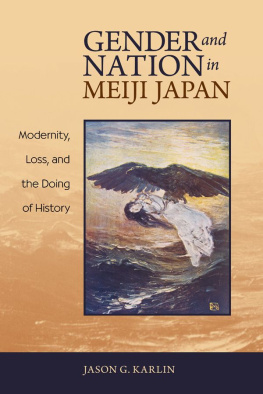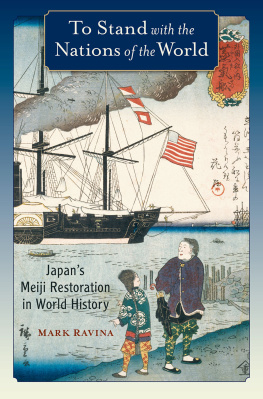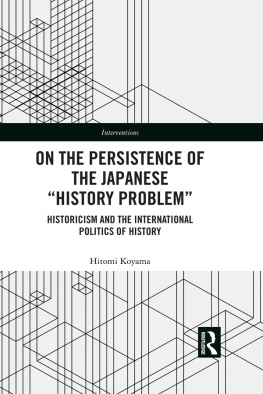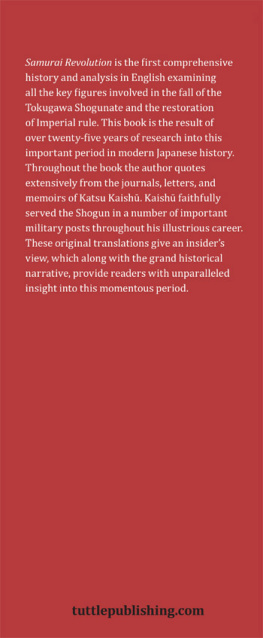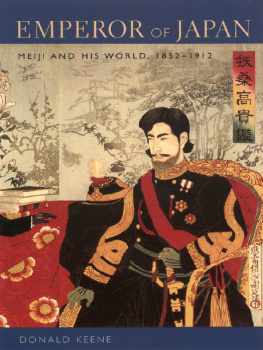Jason G. Karlin - Gender and Nation in Meiji Japan: Modernity, Loss, and the Doing of History
Here you can read online Jason G. Karlin - Gender and Nation in Meiji Japan: Modernity, Loss, and the Doing of History full text of the book (entire story) in english for free. Download pdf and epub, get meaning, cover and reviews about this ebook. City: Honolulu, year: 2014, publisher: University of Hawaii Press, genre: Politics. Description of the work, (preface) as well as reviews are available. Best literature library LitArk.com created for fans of good reading and offers a wide selection of genres:
Romance novel
Science fiction
Adventure
Detective
Science
History
Home and family
Prose
Art
Politics
Computer
Non-fiction
Religion
Business
Children
Humor
Choose a favorite category and find really read worthwhile books. Enjoy immersion in the world of imagination, feel the emotions of the characters or learn something new for yourself, make an fascinating discovery.
- Book:Gender and Nation in Meiji Japan: Modernity, Loss, and the Doing of History
- Author:
- Publisher:University of Hawaii Press
- Genre:
- Year:2014
- City:Honolulu
- Rating:4 / 5
- Favourites:Add to favourites
- Your mark:
Gender and Nation in Meiji Japan: Modernity, Loss, and the Doing of History: summary, description and annotation
We offer to read an annotation, description, summary or preface (depends on what the author of the book "Gender and Nation in Meiji Japan: Modernity, Loss, and the Doing of History" wrote himself). If you haven't found the necessary information about the book — write in the comments, we will try to find it.
Gender and Nation in Meiji Japan is a historical analysis of the discourses of nostalgia in late nineteenth- and early twentieth-century Japan. Through an analysis of the experience of rapid social change in Japans modernization, it argues that fads (ryk) and the desires they express are central to understanding Japanese modernity, conceptions of gender, and discourses of nationalism. In doing so, the author uncovers the myth of eternal return that lurks below the surface of Japanese history as an expression of the desire to find meaning amid the chaos and alienation of modern times. The Meiji period (1868-1912) was one of rapid change that hastened the process of forgetting: The states aggressive program of modernization required the repression of history and memory. However, repression merely produced new forms of desire seeking a return to the past, with the result that competing or alternative conceptions of the nation haunted the history of modern Japan. Rooted in the belief that the nation was a natural and organic entity that predated the rational, modern state, such conceptions often were responses to modernity that envisioned the nation in opposition to the modern state. What these visions of the nation shared was the ironic desire to overcome the modern condition by seeking the timeless past. While the condition of their repression was often linked to the modernizing policies of the Meiji state, the means for imagining the nation in opposition to the state required the construction of new symbols that claimed the authority of history and appealed to a rearticulated tradition. Through the idiom of gender and nation, new reified representations of continuity, timelessness, and history were fashioned to compensate for the unmooring of inherited practices from the shared locales of everyday life. This book examines the intellectual, social, and cultural factors that contributed to the rapid spread of Western tastes and styles, along with the backlash against Westernization that was expressed as a longing for the past. By focusing on the expressions of these desires in popular culture and media texts, it reveals how the conflation of mother, countryside, everyday life, and history structured representations to naturalize ideologies of gender and nationalism.
Jason G. Karlin: author's other books
Who wrote Gender and Nation in Meiji Japan: Modernity, Loss, and the Doing of History? Find out the surname, the name of the author of the book and a list of all author's works by series.

